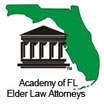Florida Veterans Pension Program
The Veterans Administration’s Non-Service Connected (NSC) Pension consists of three tiers:
- Basic Pension
- Homebound – cannot leave home without assistance, and
- Aid and Attendance – needs assistance with activities of daily living.
The veteran must have served at least 90 days of active service, with at least one day of service during a wartime period (two years of active duty if you enlisted after September 7, 1980):
- WW II December 7, 1941 thru December 31, 1946
- Korean Conflict June 27, 1950 thru January 31, 1955
- Vietnam Era November 1st 1955 thru May 7, 1975 (if served in Vietnam), August 5, 1964 thru May 7, 1975 in all other cases
- Persian Gulf War/War on Terror (Iraq & Afghanistan) August 2, 1990 thru date to be prescribed by Presidential proclamation or law.
The veteran must have received a discharge that is other than dishonorable.
The veteran must have “Medical Need”, a permanent and total disability, not caused by willful misconduct of the claimant. Once a veteran reaches the age of 65, the VA considers and classifies the veteran as permanently and totally disabled for purposes of qualifying for the Basic Pension, regardless of his or her physical fitness. A surviving spouse need not be 65 years old to qualify for the NSC Pension.
In addition to the Basic Pension, a veteran might also qualify for the Housebound benefit or for the Aid and Attendance (A&A) benefit, but not for both. For the Housebound benefit, the veteran must have a single permanent disability evaluated as 100 percent disabling, AND due to such disability, he or she is permanently and substantially confined to his or her immediate premises, OR the veteran must have a single permanent disability evaluated as 100 percent disabling AND another disability, or disabilities, evaluated as 60 percent or more disabling.
The V A’s Aid & Attendance (A&A) benefit is available to a war-time veteran or surviving spouse who needs assistance with activities of daily living (ADLs) such as bathing, eating, dressing, ambulation, toileting, transferring from one position to another (such as getting out of bed); or with instrumental activities of daily living (IADLs) defined as shopping, food preparation, housekeeping, laundering, managing finances, handling medications, using the telephone, and transportation for non-medical purposes. Custodial care is defined as regular assistance with two or more ADLs, or regular supervision because an individual requires care or assistance on a regular basis to protect the individual from hazards or dangers from his or her daily environment.
A & A is also available if the veteran is bedridden, OR if the veteran is a patient in a nursing home due to mental or physical incapacity, OR the veteran is blind, or nearly blind. The assistance required by the veteran can be provided in the veteran’s home, a retirement care facility, an independent living facility, or an assisted living facility.
For A&A, we now have written limits on the net worth of the applicant. In October 2018, the Net Worth Limit was set to the Community Spouse Resource Allowance (CSRA) as determined by Medicaid. Subsequently, it has risen by the cost of living; $154,140.00 in 2024. This limit consists of non-exempt assets plus yearly income. If the applicant is married, the spouse's assets and income are included in this calculation. As of October 18, 2018, Net Worth is the sum of assets, plus income for VA purposes.
However, reasonably predictable unreimbursed medical expenses (UMEs) for the veteran and his spouse that exceed 5% of the Maximum Annual Pension Rate (MAPR) for the base pension, $801.85 as of November 29, 2022, are deducted to reduce their household gross income. UMEs include Medicare premiums, secondary medical insurance premiums, sitter/caregiver expenses (including those paid to a family member), recurring cost of renting medical devices, the cost of assisted living facilities or nursing homes, and out-of-pocket costs for medical care and prescriptions.
A married veteran can receive up to $2,747.00 a month in Aid & Attendance pension benefits. A single veteran can receive up to $2,229.00 a month, and a surviving spouse up to $1,432.00 a month. This is a tax-free benefit.
The Aid and Attendance is not considered income for Medicaid eligibility purposes if the veteran has a spouse or dependent child. There are calculations to determine the benefit amount under those circumstances. A single veteran receiving Medicaid may have his Aid and Attendance benefit reduced to $90.00 a month.
As of October 18, 2018, the VA set a 36 month look-back period, and a penalty for up to five years for Covered Assets (assets that are part of the individual's net worth) that are transferred for less than fair market value. The penalty period begins on the first day of the month following the date of the last transfer. It is calculated by dividing the total covered asset amount by the monthly penalty rate and rounding down. The divisor for the penalty rate is currently $2,727.00.
The applicant's primary residence, including up to two acres of land, is excluded as an asset, as are cars used for household transportation, and most household goods.










